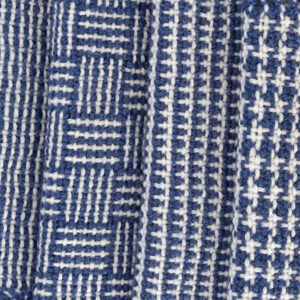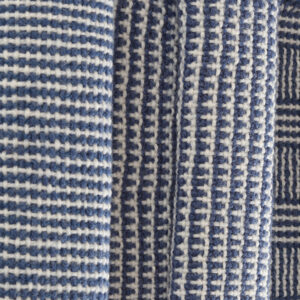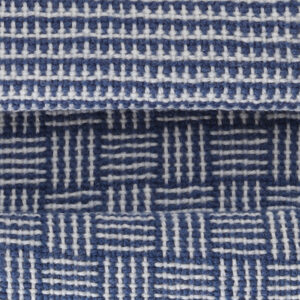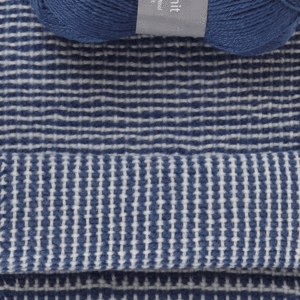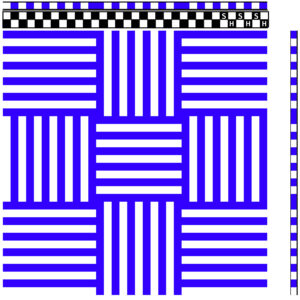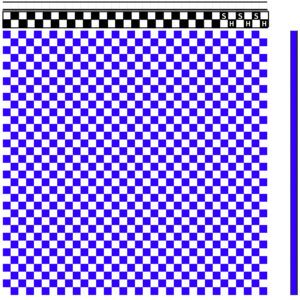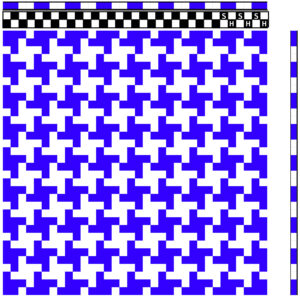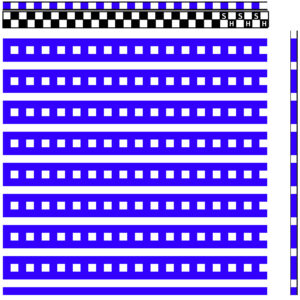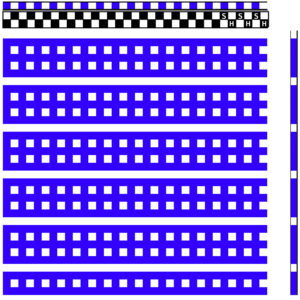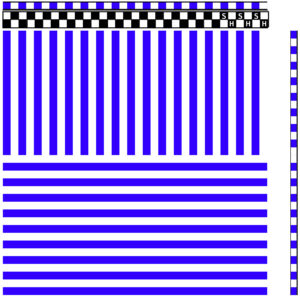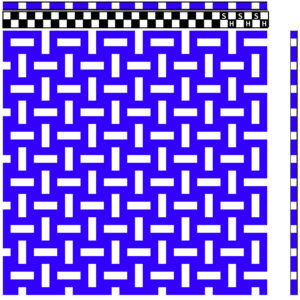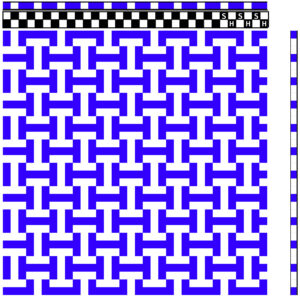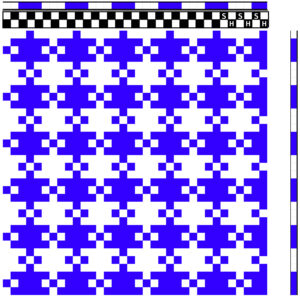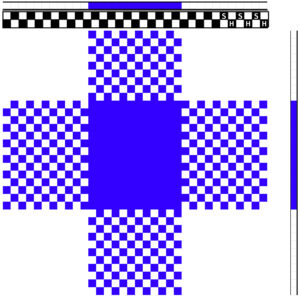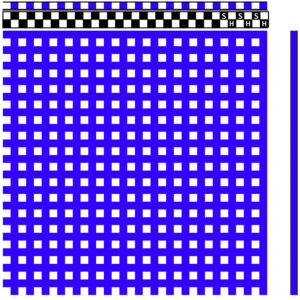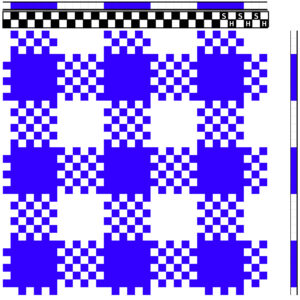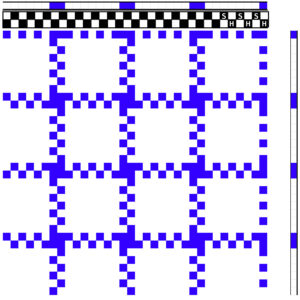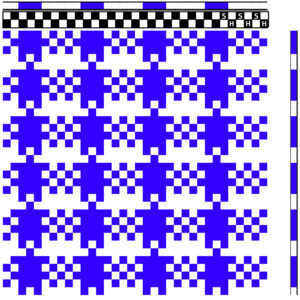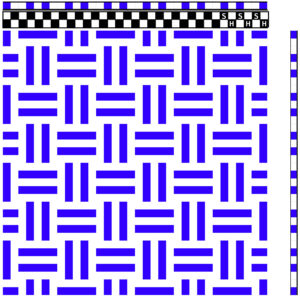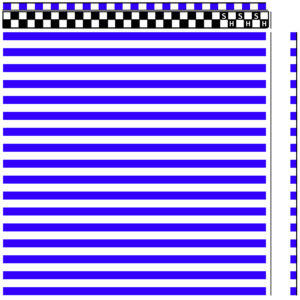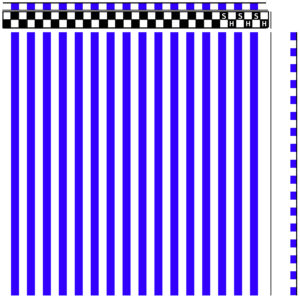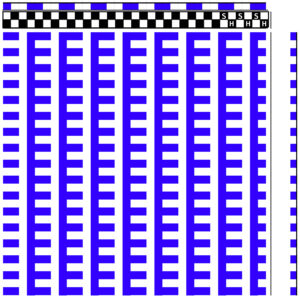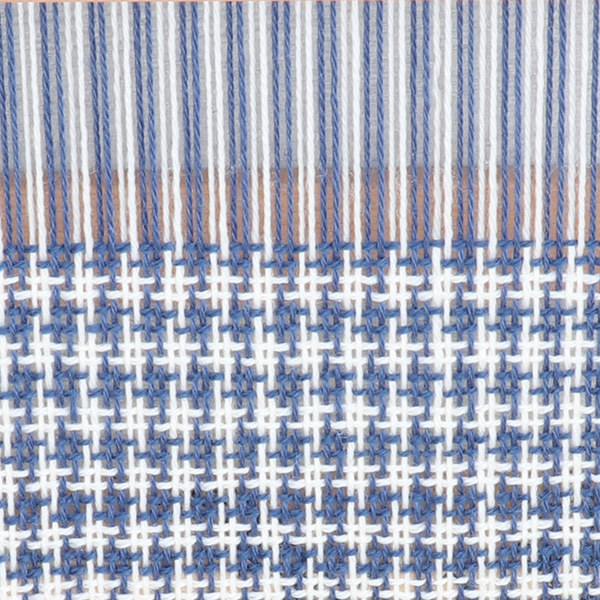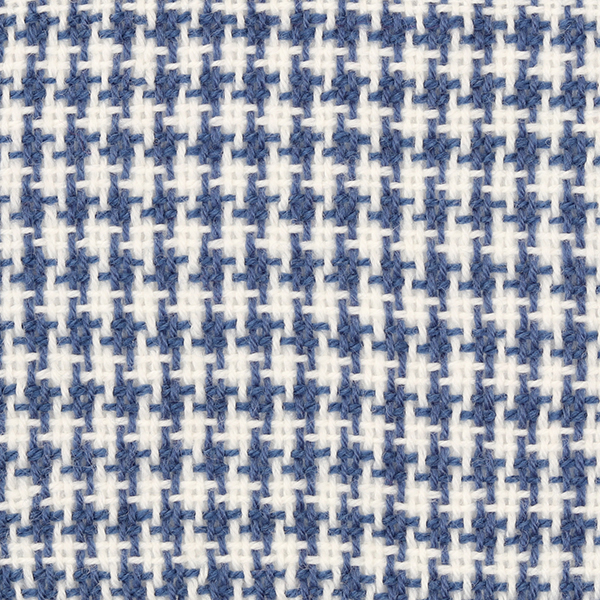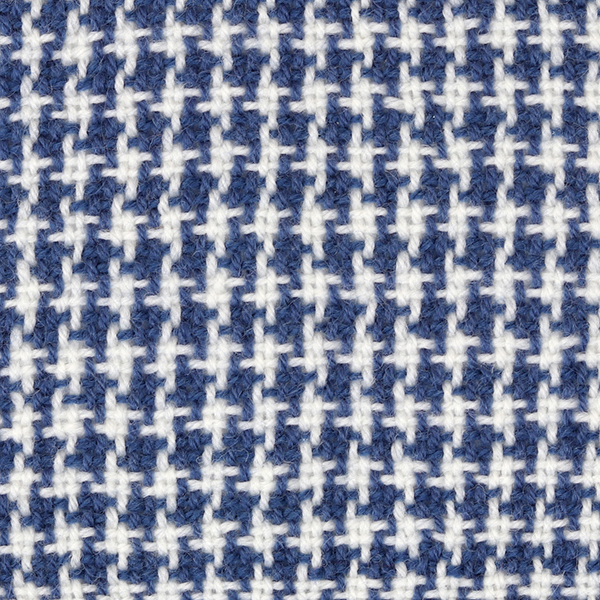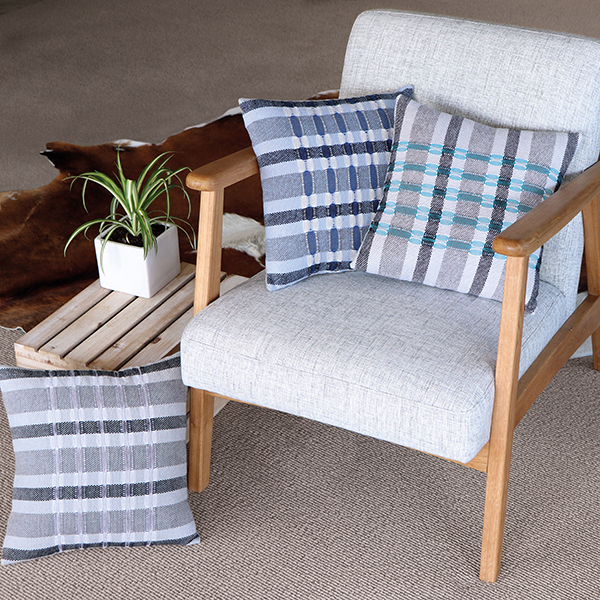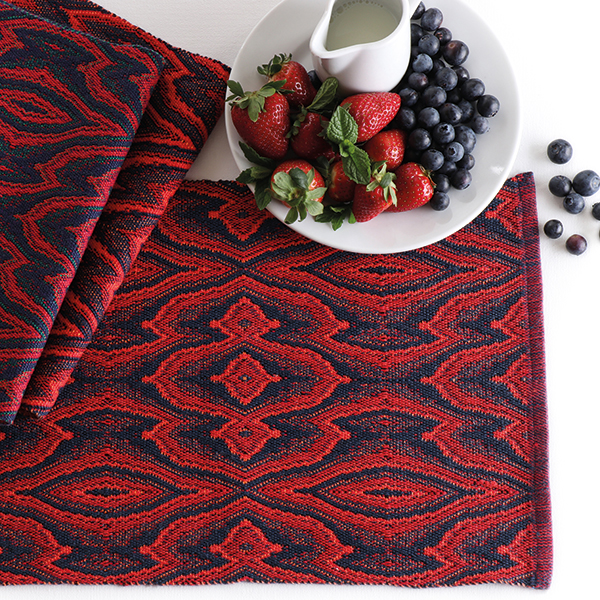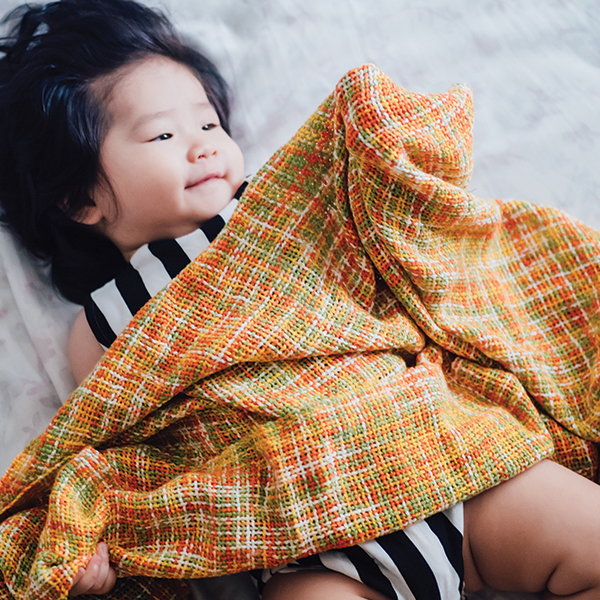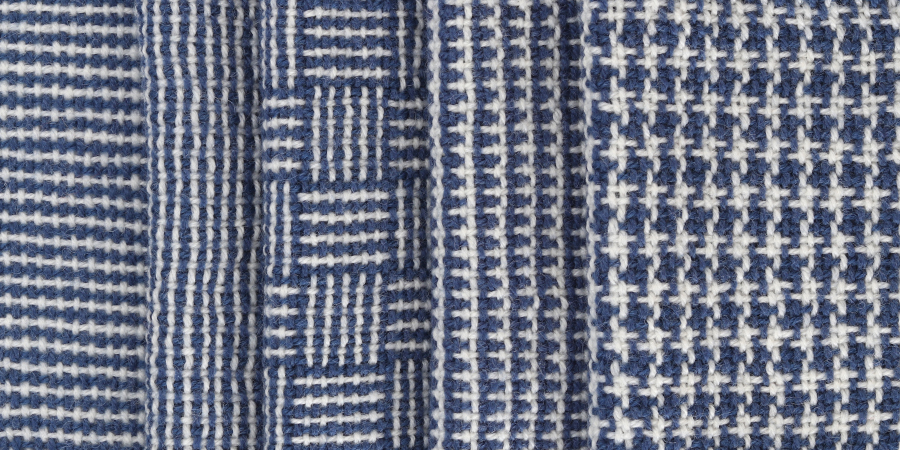
Colour and weave on a rigid heddle loom
Colour and weave is a way to create the illusion of complex, interesting, and just a bit fancy patterns within plain weave. So your rigid heddle loom is perfect for colour and weave – I have eighteen examples of colour and weave in this post – why dont you give one a go today!
Happy weaving!

Colour and weave
The patterns are created by the order of colour in the warp and the order of colour in the weft. The way the two colours interlace give the illusions and patterns.
I have several examples below. Here is the explanation of how to read the drafts.
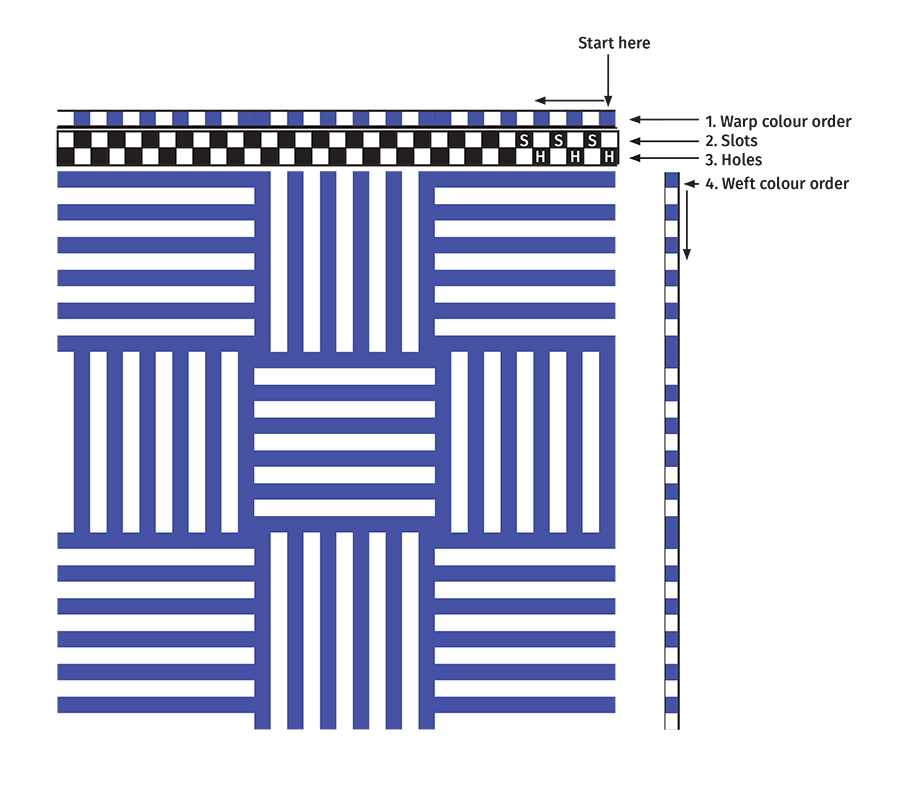
- Warp colour order – this is the order of the colours of the threads in the warp.
- Thread will go through a slot in the reed.
- Thread will go through a hole in the reed.
Looking at the example above, working from right to left, you will start with a blue thread in a hole, followed by a white thread in a slot, blue in hole, white in slot, blue in hole, white in slot etc.
4. Weft colour order – the order in which you will weave.
The examples below can be adapted to your project by calculating how many threads you need for the width of the project you want using the correct reed for the yarn you are using.
For example if you were using sock yarn (4ply) and a 10dpi (40/10) reed and you wanted your project to be 30cm (12″) wide you would need 120 threads.
The pattern sample shown above is 33 threads – making 3 pattern blocks but if you look at it – there is just a repeat of block 1 (horizontal stripes) and block 2 (vertical stripes) which are 11 threads each. So if your project was 120 threads you would end up with 11 blocks of the pattern. Almost 11! I would add one more thread to make the last block correct 11 x 11 = 121.
HINT – Remember the way the fabric looks on the loom is not the way the finished fabric will look. When you take it off the loom it will relax into place and no weaving is finished until it has been washed. Especially wool yarns as wool will “bloom” when washed and will fill in all the spaces.
If you beat the weft too tightly into position when weaving you will end up with a much firmer fabric.
See the difference between the weaving on the loom, off the loom and washed.
Read our blog post on “Finishing you weaving”.

